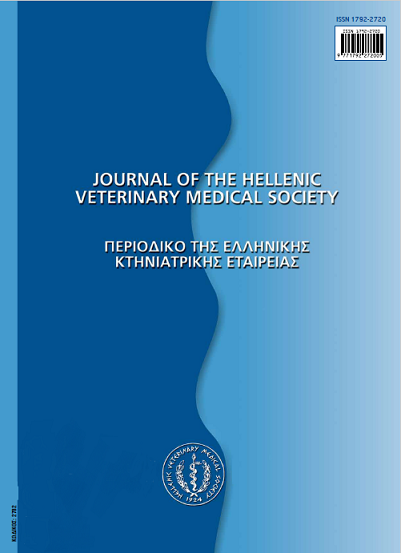Prevalence of gastrointestinal parasites of cattle in Greece
Résumé
In this study, 600 faecal samples, collected from cattle of various parts of Greece, were examined with two different parasitological methods (sedimentation and flotation). The prevalence of the infection with one or more parasitic species was 53.5%. The animals were found to be infected with the following parasitic species: Entamoeba bovis (0.5%), Eimeria spp. (11.83%), Buxtonella sulcata (7.5%), Dicrocoelium dendriticum (4.5%), Fasciola hepatica (0.16%), Paramphistomum cervi (4.66%), Moniezia benedeni (1.83%), Strongyloidea (41.66%), Neoascaris vitulorum (3.33%) and Trichuris spp. (0.83%). The results are compared to those from similar studies in Greece or abroad. Suggestions for the prevention and control of cattle parasites are discussed.
Article Details
- Comment citer
-
DIAKOU (Α. ΔΙΑΚΟΥ) A., & PAPADOPOULOS (Η. ΠΑΠΑΔΟΠΟΥΛΟΣ) E. (2018). Prevalence of gastrointestinal parasites of cattle in Greece. Journal of the Hellenic Veterinary Medical Society, 53(4), 304–309. https://doi.org/10.12681/jhvms.15386
- Numéro
- Vol. 53 No 4 (2002)
- Rubrique
- Research Articles

Ce travail est disponible sous licence Creative Commons Attribution - Pas d’Utilisation Commerciale 4.0 International.
Authors who publish with this journal agree to the following terms:
· Authors retain copyright and grant the journal right of first publication with the work simultaneously licensed under a Creative Commons Attribution Non-Commercial License that allows others to share the work with an acknowledgement of the work's authorship and initial publication in this journal.
· Authors are able to enter into separate, additional contractual arrangements for the non-exclusive distribution of the journal's published version of the work (e.g. post it to an institutional repository or publish it in a book), with an acknowledgement of its initial publication in this journal.
· Authors are permitted and encouraged to post their work online (preferably in institutional repositories or on their website) prior to and during the submission process, as it can lead to productive exchanges, as well as earlier and greater citation of published work.











